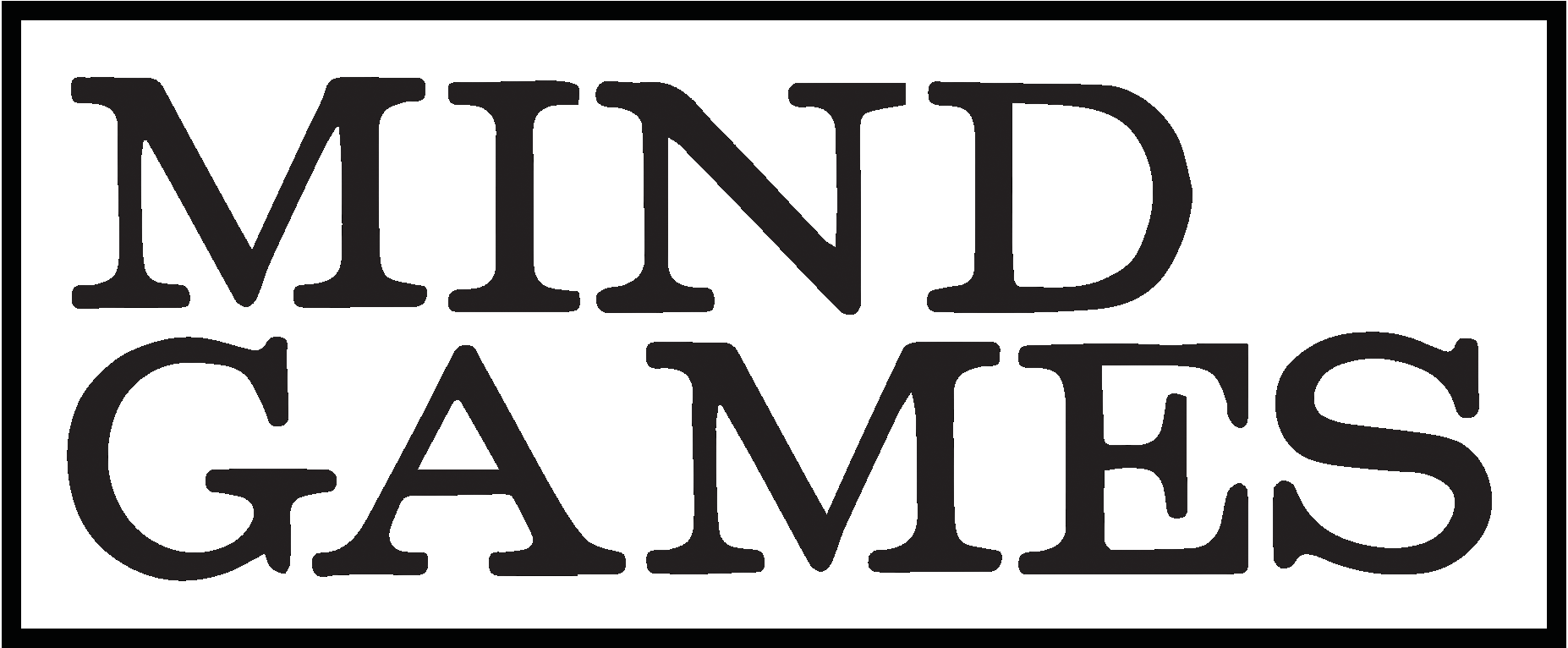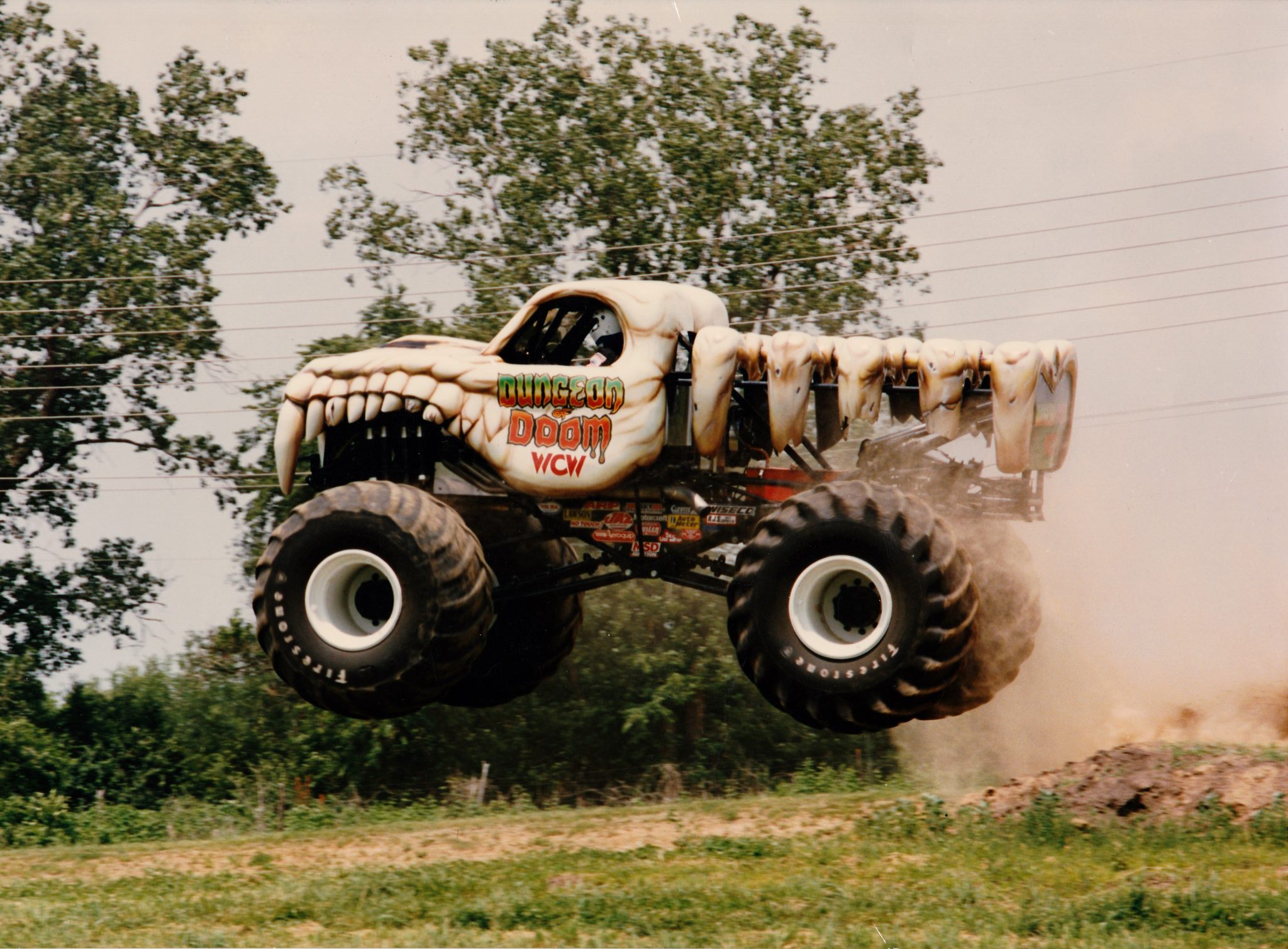Of Monsters And Men: Monster Trucks in Pro Wrestling
A breakdown of sports entertainment worlds colliding.
BY CHRIS CAMPISE
As wrestling fans, we often find ourselves having to explain many of the intricacies of the business. The real vs. fake debate notwithstanding, there is often the need to explain the detailed vernacular that exists in the wrestling world. To the untrained ear, terms such as babyface, apron, piledriver, kayfabe, and shoot may seem silly and unrelated, but it is the term “sports entertainment” that is usually most misunderstood and often disregarded. The term, as introduced to modern audiences by Vince McMahon, was a means to an end, a term to placate litigation that aimed to regulate wrestling as an authentic competition. The term is just ambivalent enough to not raise people’s eyebrows or people’s elbows but opens it up to interpretation. A sporting event that has its base in spectacle and not in competition describes professional wrestling quite well. Sports entertainment can also be applied to another arena and county fair mainstay, the wild world of monster truck driving. These two seemingly dichotomous “sports” have crossed paths numerous times and have influenced each other in ways that may have slipped past the average, or even die-hard, fans. The worlds of wrestling and monster trucks are joined at the hip, or at the bumper, much like the trucks in the monster truck sumo match that took place at WCW’s Halloween Havoc in 1995.
WWE in the mid-nineties often gets ridiculed for being over the top, or cartoonish when it came to the wrestlers’ gimmicks or storylines. But as is evident in the 1995 edition of Halloween Havoc, WCW was just as much, and in some cases, maybe more cartoonish in its storylines and characters. The main difference in how these colorful storylines were presented was Ted Turner’s checkbook. Halloween Havoc 1995 took place on October 29th and was only the second pay-per-view event for WCW since the beginning of the Monday Night War. WCW Monday Nitro had debuted only weeks prior, on September 4, which marked the beginning of the head-to-head competition between Eric Bischoff and Vince McMahon. These early days of Bischoff’s tenure would see Turner’s money being spent in extravagant fashion, and Halloween Havoc was no exception.
The main event of the night’s show was The Giant vs. Hulk Hogan. This would be the first time Paul Wight, later known as the Big Show, would wrestle on camera. However, prior to this moment, The Giant and Hulk Hogan would face off in the first monster truck sumo match, which took place on the roof of Cobo Hall, next door to the Joe Louis Arena in Detroit, MI. At this point, WCW had shown the monster trucks with “skins” of numerous WCW talent, including Sting, Macho Man, and later the Nitro Machine, all of which were on Bigfoot 4x4 owned chassis. But for the sumo match, the Dungeon of Doom truck’s bumper would be welded to the bumper of the Hulkster truck, then the two would push each other nose-to-nose around a ring of cones trying to push each other’s axles out of the ring. This segment often gets remembered for what happened after the two men exit the trucks following Hulk’s win over The Giant, which ends with Hulk and The Giant choking each other on the roof’s edge and The Giant falling off the roof of the arena. Hulk then scrambles around looking for help and somewhat breaking character by saying, “That wasn’t supposed to happen.” The Giant would reappear minutes later completely unharmed after falling off a five-story building to beat Hogan by DQ in his first match for the company. Such retrospectively wild booking somewhat shadowed the spectacle of a rooftop monster truck battle.
To say that this event is spectacular is an understatement. Renting an entire separate arena and then presumably craning two monster trucks to the roof of said arena, renting a helicopter to shoot aerial footage, having Bob Chandler, creator of the Bigfoot truck on commentary, and also placing explosive charges randomly around the “ring” while two monster trucks, driven (partially) by pro-wrestlers seems like a great way to sell a pay-per-view event. With hindsight, this event may seem like a good example of why WCW would eventually go out of business. A huge pre-taped segment, with your biggest star barely visible inside a huge machine, and not utilizing one of the main attractions of monster trucks, the smashing of cars, all seems short-sighted and perhaps frivolous, but one only needs to compare this to the product WWF was presenting at the time.
One week prior to the 1995 Halloween Havoc was In Your House 4 on October 22. This event, which was fairly indicative of WWF pay-per-views, had the classic In Your House porch set, with no ramp and no Titantron. It was quite a modest set in comparison to WWE’s Raw sets only a year later, and far from the smoke filled sets and rooftop stunt shows going on in Detroit the next week. But this was the difference seen by fans in 1995: match-based PPV’s with colorful characters and silly “family-friendly” storylines, but little major eye-grabbing spectacle. Vince’s pockets did not run nearly as deep as Ted Turner’s at this time, and it showed. This In Your House was co-headlined by matches between Diesel versus British Bulldog and Razor Ramon against Dean Douglas. Thinking that only 7 months later, on the May 27th, 1996 episode of Nitro, Scott Hall would walk into the ring and ostensibly begin the New World Order, forever changing the wrestling landscape both in front of, and behind the cameras, makes these matches seem insignificant. And that Hulk Hogan would join the Outsiders and become Hollywood Hogan on July 7, only 9 months removed from the sumo match, perhaps is why this event is often forgotten as the “Once In a Lifetime” event it was said to be at the time.
It would be three and half years until the WWF would respond in kind to having a monster truck play center stage in a main event storyline. Monster trucks, however, were being used as advertisement for WWF and WCW in the intervening years. Trucks with wrestler themed bodies were widespread and seemed to be quite popular during both the “New Generation” and “Attitude” eras. Trucks featured Shawn Michaels, the Undertaker, Bret Hart, and later D-Generation X, The Rock, The Brothers of Destruction, and there was even an ECW truck! But none would become as memorable as the Austin 3:16 truck, driven by Stone Cold Steve Austin on the April 19, 1999 episode of Monday Night Raw.
The wrestling world that the Raw segment from April '99 took place in was quite different from the one of Havoc '95. We’re fully entrenched in the Monday Night War. Nitro had been beating Raw in the ratings battle which saw an average of 10 millions fans watching wrestling each Monday night. Prior to this episode of Raw, on January 4, Tony Schiavone would give away the results to Raw proclaiming, “That’ll put some butts in the seats,” in reference to Mankind winning the WWF Championship from The Rock, thus shifting the focus away from Nitro and back to Raw. What Vince and the WWF would do with the bigger spotlight would come to dominate the way Raw did business: huge “TV moments” that would get fans salivating to see the culmination of feuds on PPV’s. The most indelible of those moments featured Stone Cold Steve Austin driving any and all large vehicles and causing general mayhem. In April, we would see Austin driving an Austin 3:16 monster truck, and unlike during Havoc, the WWF played to the truck’s strengths. Instead of having a big budget stunt show on a roof with no audience in sight, that night’s Raw audience would be front and center in seeing Stone Cold flatten not only the Rock’s new Lincoln Town Car in the parking lot in a pre-taped segment on the Titantron, but then Austin would drive the truck live into the arena and flatten the hearse that Rock had set up for the “Steve Austin funeral” segment taking place in the ring and near the stage.
The way WWF would utilize a monster truck to further a storyline, which would culminate in the meeting of the Rock and Stone Cold at the inaugural Backlash PPV the following Sunday, proved that despite McMahon’s pockets having gotten deeper during the Attitude Era, he still used money wisely. Instead of renting arenas and helicopters and having Giants fall off buildings, Steve simply ran over Rock’s car. Exactly what a monster truck is meant to do. This moment in the career of Stone Cold Steve Austin could have been his last. However, instead of a stunt fall that was presumably fatal, Austin has said when answering questions on an episode of his podcast The Steve Austin Show that, while waiting backstage for the pre-taped segments to wrap and to get the cue for his live flattening of the hearse, he was being slowly suffocated by exhaust fumes. Luckily for us, this was not the end of the Rattlesnake. He went on to become the legend we know today and have numerous other monster truck connections, including multiple truck sponsorships, even one during his post-wrestling career, with a Broken Skull Ranch truck in the 2010s.
Using the monster truck as a tool to enhance both wrestling name brands and bring another level of excitement to the live wrestling experience is not limited to these two events. But comparing the two, despite years of separation, allows us to see how Sports Entertainment can be universal, although this is a two way road. Pro wrestling benefitted greatly from the world of Monster Trucks, but the reverse may be even further reaching. Monster trucks with wrestling-themed bodies had, until 2000, been driven by veteran drivers. But when WCW was in its death throes, Debra Miceli saw the connection between Monster trucks and wrestling as a way to reinvent herself. Despite having been a champion in All Japan, AWA, and WWF, Debra was most known at that point as the once-named Alundra Blayze, who, wrestling again as Madusa, dropped the WWF women's title in the garbage on WCW Monday Nitro, a moment she would spend the rest of her career trying to live down. But it would not be in the squared circle where Madusa would redeem herself. She would go on to drive her namesake truck, having retained the Madusa name rights from WCW and would become a two-time World Monster Jam Finals champion. By doing so, Debra “Madusa” Miceli would come to dominate in two forms of Sports Entertainment, a mostly male dominated world.
In 2015, she was inducted into the WWE Hall of Fame, cementing her legacy and contributions to the world of professional wrestling. She has yet to be inducted into the International Monster Truck Hall of Fame, but if that day comes, Debra will be the living embodiment of the bumper to bumper Sumo-style connection between monster trucks and professional wrestling.




